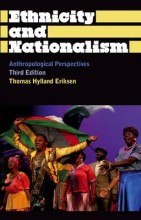Summary: Cultuur En Nieuwe Media Class Notes
- This + 400k other summaries
- A unique study and practice tool
- Never study anything twice again
- Get the grades you hope for
- 100% sure, 100% understanding
Read the summary and the most important questions on Cultuur en Nieuwe media Class notes
-
all classes
This is a preview. There are 47 more flashcards available for chapter 01/03/2014
Show more cards here -
meaning of video games, jenking
- children bring previous knowledge and ecperience to their gaming- they interpret- they engage in role playinh- they map their own goals and agenda into the game space -
effects model video games assumes:
- children susceptible to confusion between fantasy and reality- game pratice helps prepare real world violence- kids learning to kill, learning to like it- shape our reflexes, impulses, emotions- rewarding to perpate violent acts -
tension real life and mediated life
great constant between expereincing VIA the medium and in REAL LIFE. (representations war_ -
adorno's critique culture industry
’When culture becomes an industry, it will change’’. Culture should educate (socialist ideal). (Ex.: Hollywood: nothing good can come out of there, there is too much focus on profit.) Standardization, repetition (‘retro-trends’, more of the same), ‘glued to the couch’, creation of illusions (‘escapism’). -
simulacrum real in tis consequences
1. : map is no longer a representation of the territory, map makes the territory. ‘’It is rather a question of substituting signs of the real for the real itself’’. Ex.: Bosnian map: representation became real in Bosnian war: people wanted to make reality fit the map (through ethnic cleansing).
The map is what people base their decision on (bomb attacks)
Bergman: they take an image of playboy and bring it to the plastic surgeon. They want to become like the simulacrum. When decisions are made based upon this; it has real consequences .
-
framing power of the medi
1. media are increasingly the space where we make the distinction between ‘what matters’ and ‘what does not matter’. Ex.: picking up the phone or watching our favourite programme? Little acts in which we say that media is more important than people around us. We give this power to media. it is about how the media frames by deciding what matters and what not.
Celebrities are an example. They are presented as important.
-
media rituals coudlry
Couldry: how do we give power to the media? By rituals. Placing the tv in the centre of the room. We give the media authority to be the “centre” of society.
Media rituals capture that naturalized dimension of social life that acknowledges in condensed form the framing power of the media.
Are the rituals that legitimate and naturalize the media’s self-representation of being the centre of society. It reinforces the value that the media is our acces point to the social centre.
-
myth of the mediated centre
1. We think of society as a structure with a ‘centre’. But this is a myth; it is not a concrete, material given. Nick Couldry: through symbols and rituals this myth is sustained (Ex.: king at the centre, core values ‘at the centre’, symbolic geography (centre of the country marked)). Media nemen de rol van symbolen en rituelen over: ‘the myth of the mediated centre’.
Media are taken over the role of symbols and rituals. The media presents itself as the accespint through the center of society. The media decides what is important and what is not.
-
mazarrelaa text authencity
people became aware of the mediation and globalization that was happening. ‘Culture’ was very evidently made (a media production), everyone claims to be authentic (Singapore Airlines-clothing, Thai women dancing). Now there is a quest for authenticity: ‘what is still real? What is MORE than an opinion? What is authentic?’ reifying cultures and reproducing local cultures. Making something local. Authentic, not globalised. Globailes is the mediated world, people want to live in the “pure, unmediated” world -
constructivist notion of culture
Naast/tegenover ‘’Essentialist notion of culture: there is a structure and therefore you act in a certain way’’) Constructivist notion of culture: not passive. Culture is a story-to-live-by, with which we identify. We identify with culture and act according to cultural rules.
- Higher grades + faster learning
- Never study anything twice
- 100% sure, 100% understanding































